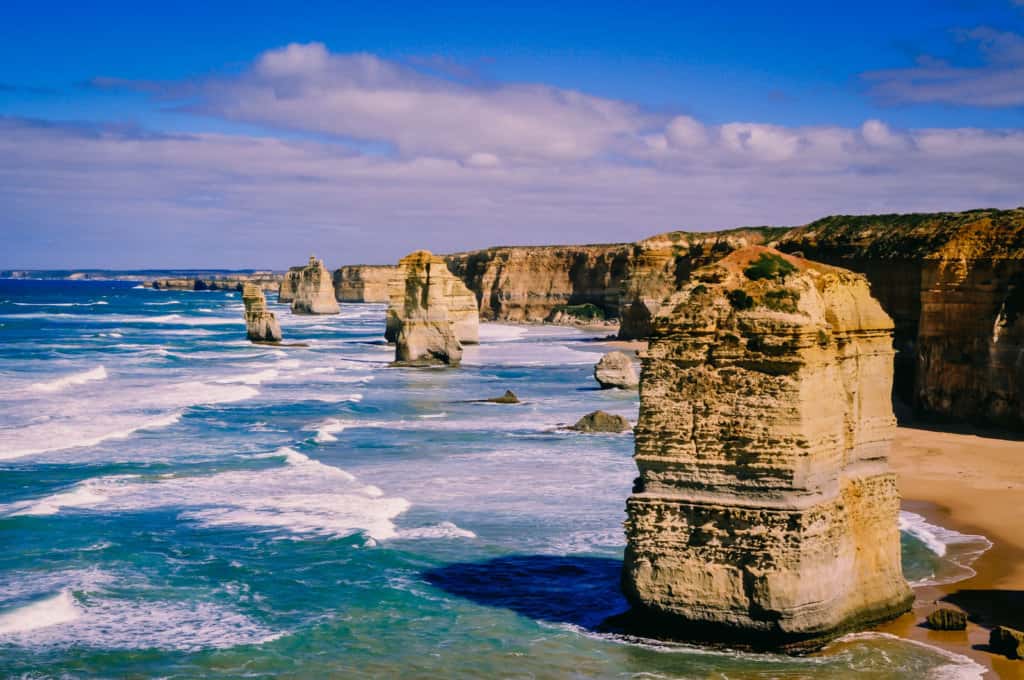Hike | Victoria | Australia
Hiking the Great Ocean Walk in Australia
Text | Anninka Kraus
Photography | Tobias Kraus

Australia Victoria
The Great Ocean Walk is a 100km walking trail winding along the diverse and stunningly beautiful coastline of Victoria, southwest of Melbourne. It usually takes hikers 8 days to complete the trail, but you can easily hike a shorter distance and do individual trail sections. We hiked from Apollo Bay to Johanna Beach and afterwards completed the rest of the Great Ocean Road by car.
Of the many coastal walks we’ve done, this was one of the most beautiful, with stunning cliff-top panoramas, deserted beaches, giant waves crashing on a rugged coastline, kangaroos keeping us company at the campsites, and eucalyptus forests with koalas sitting in the treetops, munching on leaves.
jump ahead.
5-day Itinerary Great Ocean Walk Apollo Bay – Johanna Beach
The Great Ocean Walk meanders along Victoria’s shoreline, between Apollo Bay and the Twelve Apostles at Port Campbell.
You can hike the whole distance or individual sections. We went from Apollo Bay to Johanna Bay in 5 days.
On our way to the Great Ocean Walk
Apollo Bay – Eliott Ridge Campsite
Eliott Ridge Campsite – Blanket Bay
Blanket Bay – Cape Otway Lightstation
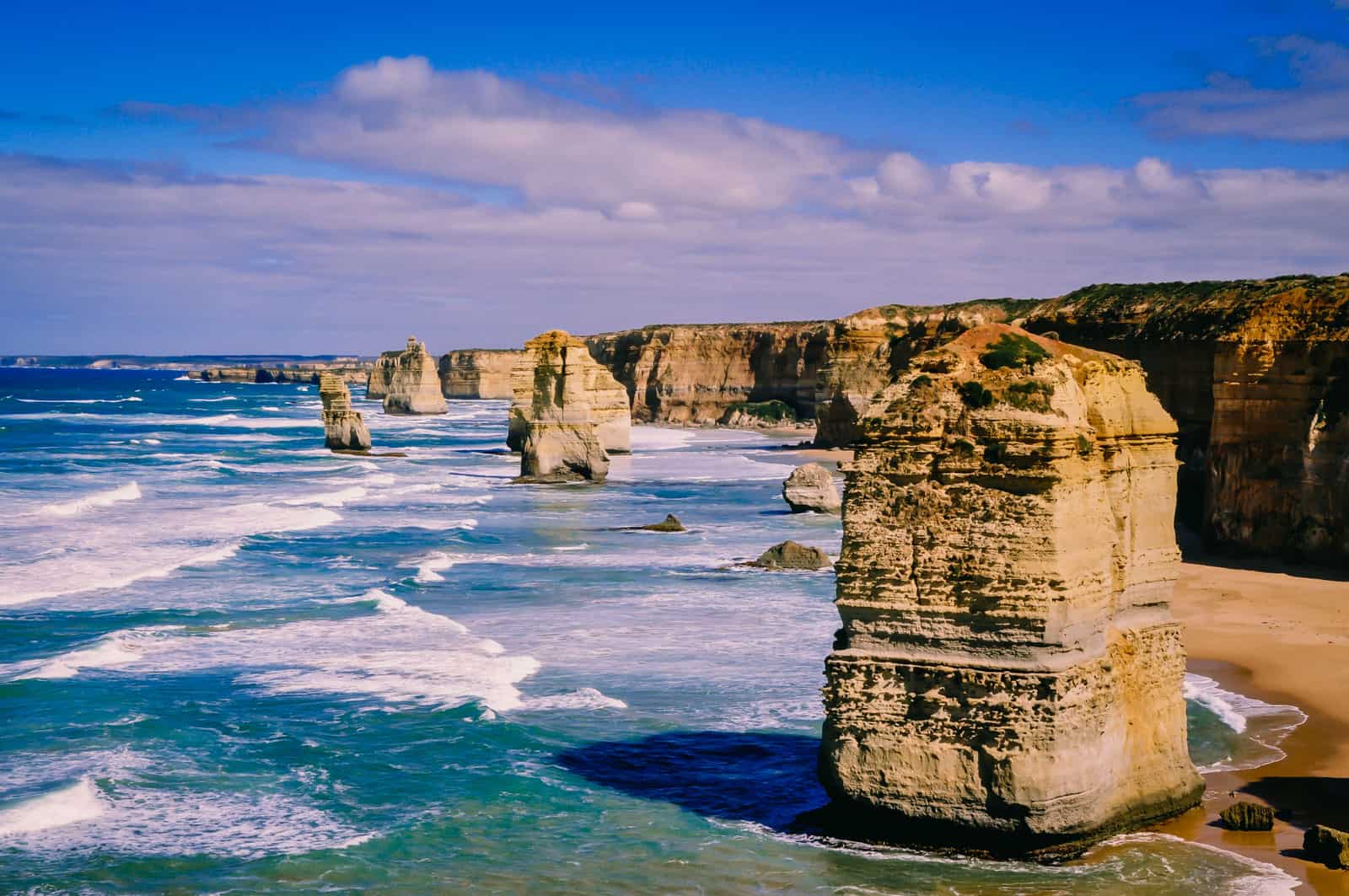





A koala napping in a tree, three metres above the ground, its butt firmly wedged into a forked branch.
what to expect.
One of the world’s best coastal hikes that winds along the diverse and stunningly beautiful coastline of Victoria, southwest of Melbourne, for 100km between Apollo Bay and Port Campbell
Panoramic views of the unspoilt coast, foaming waves surging against the rugged rock cliffs that plummeted into the sea, and dreamy little bays with sandy beaches
Fluffy koalas feeding in the treetops and kangaroos visiting at the campsites
On our way to the Great Ocean Walk
Time passes slowly but also alarmingly fast when you’re travelling. When we left Melbourne and drove towards Apollo Bay to hike the Great Ocean Walk, we realised that we had been travelling for three months by then. The slowness, psychologists believe, is owed to new experiences. Because you’re constantly learning, seeing, and experiencing something new as you travel, time passes slowly. Unlike when you’re stuck behind a desk all day staring at a screen and mechanically deleting mails that are either obsolete (most will be if you just ignore them long enough), spam, or were sent by an idiot who cc’s half the company and all external contacts.
Unfortunately, the individual fun, new, and exciting moments of travelling pass with alarming swiftness and so three months felt like a year and a week at the same time. In Torquay we hit the start of the famous Great Ocean Road, one of the most stunning scenic coastal drives in the world, skirting sheer cliffs between Melbourne and Adelaide. Our expectations pitched high, we were not disappointed for every bend sprang a surprise – it was like opening a whole carton of Ferrero Kinder Surprise.
I was an intern on the Kinder Surprise marketing team at Ferrero once and even then, didn’t tire of opening yellow plastic eggs, or eating the chocolate egg. Unfortunately, when you reach a certain age people start looking at you strangely as you shake two dozen eggs close to your ear trying to figure out whether the Julius Caesar figurine of the Asterix and Obelix limited edition would make that specific rattling noise and then put five eggs in your shopping trolley with no screaming toddler in sight that could be mistaken as yours.
Yet even I admit that the surprises the Great Ocean Road dished out were better than any Kinder Egg limited edition. The panoramic views of the unspoilt coast, foaming waves surging against the rugged rock cliffs that plummeted into the sea, and dreamy little bays with sandy beaches were almost dangerous – for who can concentrate on the road on this drive? We stopped at almost every lookout-parking bay to take in the views and just after Apollo Bay turned into a public carpark in front of the Marenga Caravan Park, strapped on enormous backpacks, and wandered off towards Elliot Ridge Campsite.
If the scenery of the Great Ocean Road was anything to go by, we were in for a hiking treat. If only the backpack wasn’t so heavy! When Tobi had told me that the only store on the 5 day / 4 night walk was a small kiosk on day three, I went into foraging mode, scared we’d run out of food and face the choice of starvation or killing a sweet baby koala (I’m still pondering which it would be). Of course, on the trek, I quickly came to regret the bottle of milk, glasses of pasta sauce, fresh fruit, and muesli bars to feed an army in addition to 2.5 litres of water that made my backpack feel like a sack of wet cement. I ate two Cadbury Brunch bars, which helped slightly by shifting some weight from my back to my belly.
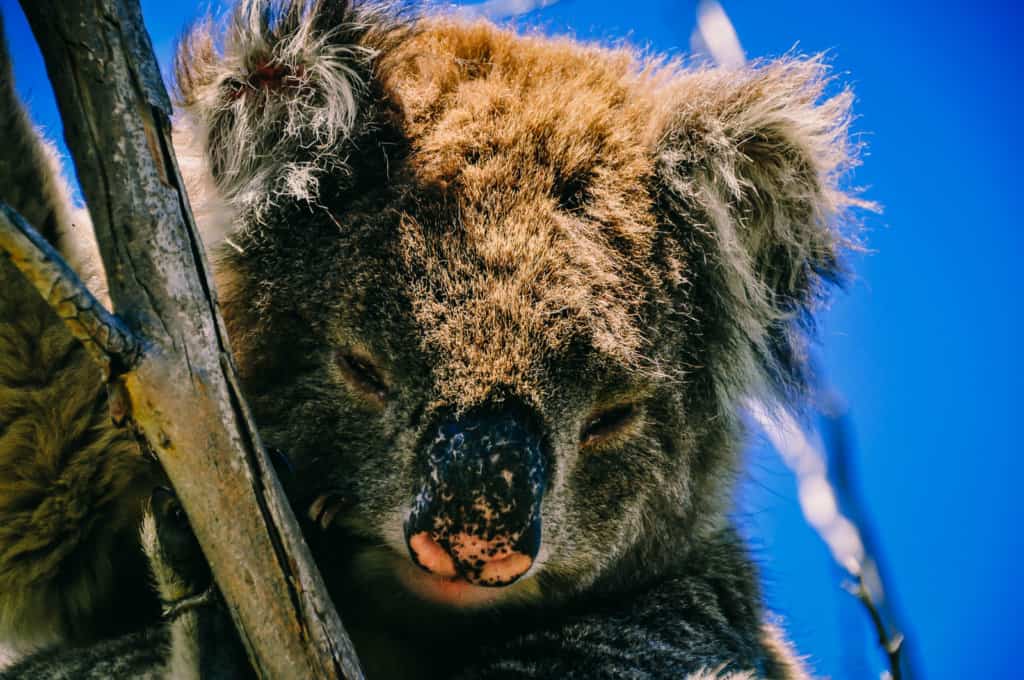
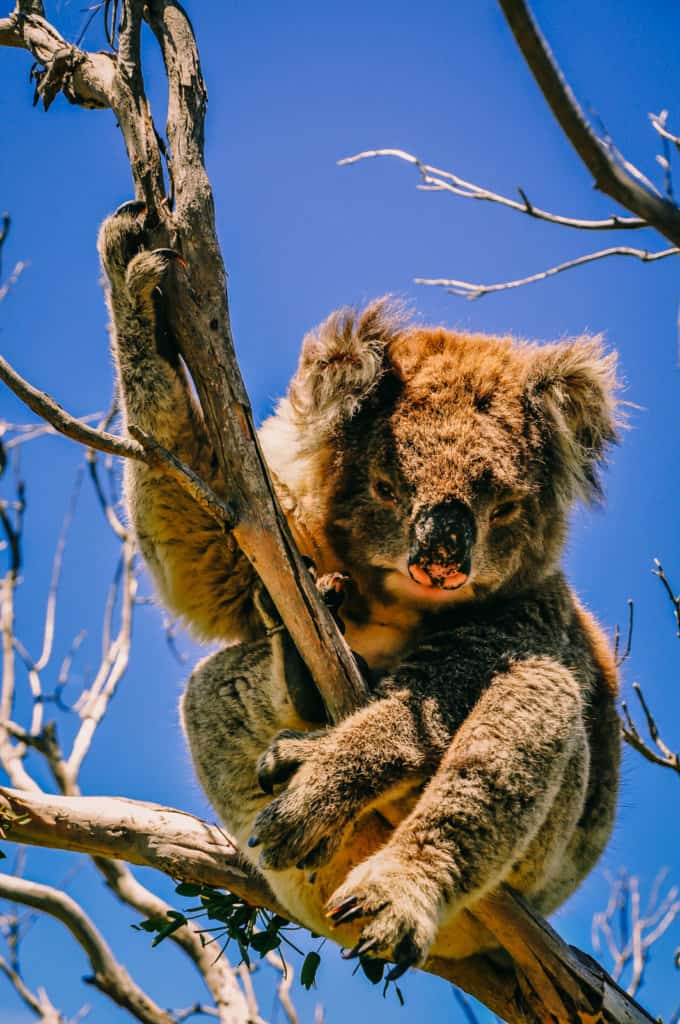
Apollo Bay to Eliott Ridge Campsite
Today’s stretch was a gentle walk along the coast, overlooking the deep blue sea and frothing waves dashing towards the shore, until after an hour and a half the trail led inland and uphill to Elliot Ridge. The estimated time for this leg is 3:45 hours but we managed it easily in 2:15 hours despite carrying half a grocery store with us. All campsites on the Great Ocean Walk must be applied to and paid for in advance, which we did two weeks ago and were relieved to still obtain a permit in the height of the tourist season and a limit of eight tents at most campsites.
But our first campsite wasn’t’ exactly overcrowded – there were just two elderly British ladies, an Australian father and son, and us. The individual spots were generously spaced and scattered amongst eucalyptus trees and hedges. We pitched our tent, then sat at a small wooden table and listened to the soothing sound of crashing waves that would follow us during the next days – and some strange grunting noise that we had heard for hours but both couldn’t place. Initially I thought it might be Tobi’s furtive mutterings of discontent directed at me for generously overloading his pack. He thought it was wild hogs or seals. But when we did the dishes, poop dropped down beside us, and we glimpsed the fluffy behinds of koalas feeding in the treetops. I didn’t realise but apparently they grunt.
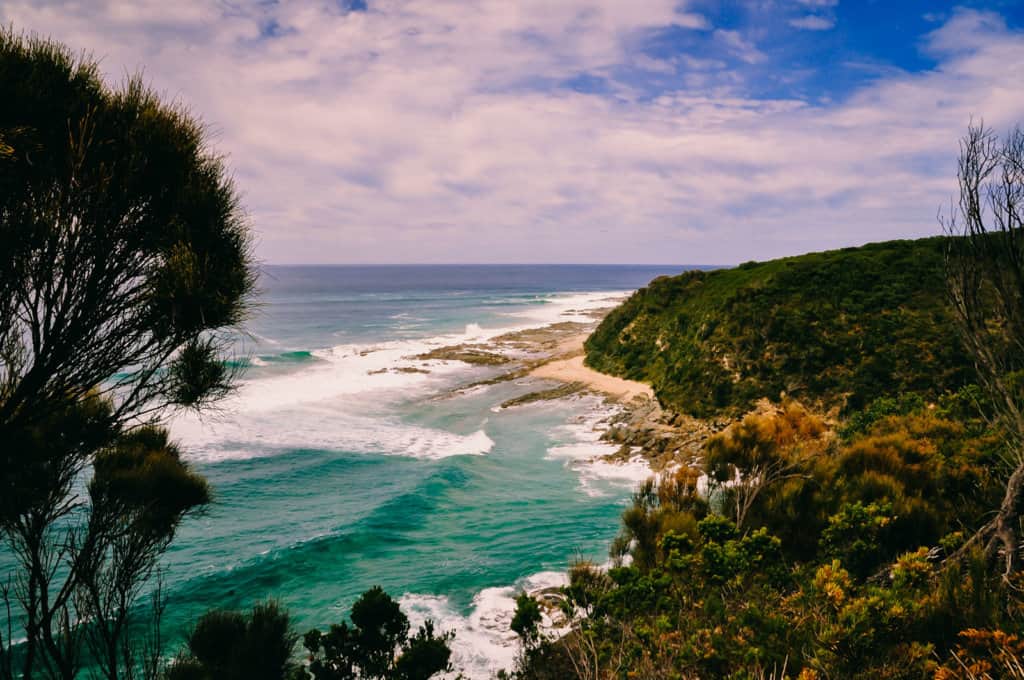
Eliott Ridge Campsite to Blanket Bay
During the night it cooled down considerably but we hardly noticed in our warm down sleeping bags, however the English ladies were caught unawares, ‘My, such chilly temperatures in Australian summer,’ as they put it politely. One would think that the English are used to cold summers, but the ladies regretted taking only light summer bags. On the second day, towards Blanket Bay, the Great Ocean Walk didn’t lead directly along the shoreline but inland through eucalyptus wood for 4 kilometres.
The estimated time for the 13.3km leg is 4 hours but it took us barely three at a leisurely pace. This spot was busier because a public campsite for non-hikers, not far from the Great Ocean Walk hike-in plots, was accessible by car and fully booked by families with small children (thus never quiet). I looked at the small nuisances blissfully splashing about in the sea and thought that the water couldn’t be too cold, slipped into my bikini and ran into the surf. It was freezing and I stayed for ten minutes, in knee-deep surf, muttering, ‘If they can do this and smile, so can you!’ I did manage to go in fully and stay in for five minutes but was unable to muster the smile. Back out in the sun the air felt surprisingly warm and quickly smoothed out my goose bumps. We lazed around the rest of the day, napped, read, and strolled along the stony plateau that was gradually revealed by the low tide.
Just after dinner, an eastern grey kangaroo caught me licking tomato sauce off my plate. Its small head eyed us curiously as it hopped forward and continued feeding, while we cautiously drew closer and were surprised at its large size, especially of the tail and muscular hind legs. After watching us and feeding some more it hopped back into the undergrowth but an hour later we saw it again. Or maybe it was another member of this species, for who can tell with kangaroos.
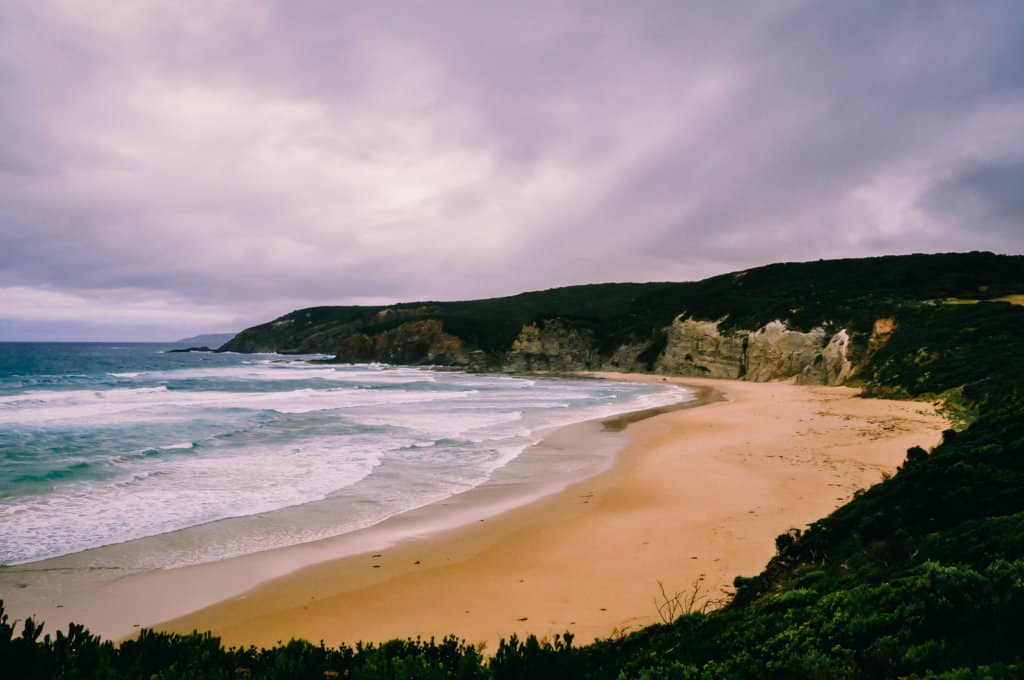
Blanket Bay to Cape Otway Lightstation
The second night was even colder than the first and the two British ladies were having breakfast at 7am, already packed and ready to race off, when I padded to the toilet. Today’s stretch of 11.4km (estimated time 3:45 hours) led from Blanket Bay along the cliff tops to Cape Otway Lightstation via Parker Hill. I loved this leg of the hike as we passed by many lookouts from where you can watch huge waves pile up high and crash into the vertical rock face, covering the roaring sea in a thick layer of white bubbly foam. In the thick of it, a small seal was braving the strong current and skimming over the waves a few metres from the escarpment.
An hour from our next campsite we stumbled upon a koala napping in a tree, three metres above the ground, its butt firmly wedged into a forked branch. It seemed slightly irritated by my spate of oohs and aahs and very slowly opened one eye, then the other; just a very narrow slit wide. Again, very slowly, it turned its head towards us, stretched, regarded me with annoyance as I exclaimed, ‘Oh my god, it’s so cuuuute. Look at those fluffy ears!’ and, as if totally exhausted by this much fuss and exercise, it slowly closed both eyes again. Reading up on koalas in our guidebook we learned that they sleep for up to 22 hours a day. If they eat as fast as they open their eyes in those other 2 hours, they must surely constantly be on the brink of starvation. How they squeeze in time to make babies I have no idea, and successfully at that speed too.
The Cape Otway Lightstation campsite, half a kilometre from the Cape Otway Lighthouse precinct, was set amongst coastal woodlands and the nicest site on the trek so far. Not that the amenities were anything better than composting toilets and a rainwater tank with tap, but that kiosk Tobi mentioned popping up on day three was awaiting us with chilled Pepsi Max and ice cream.
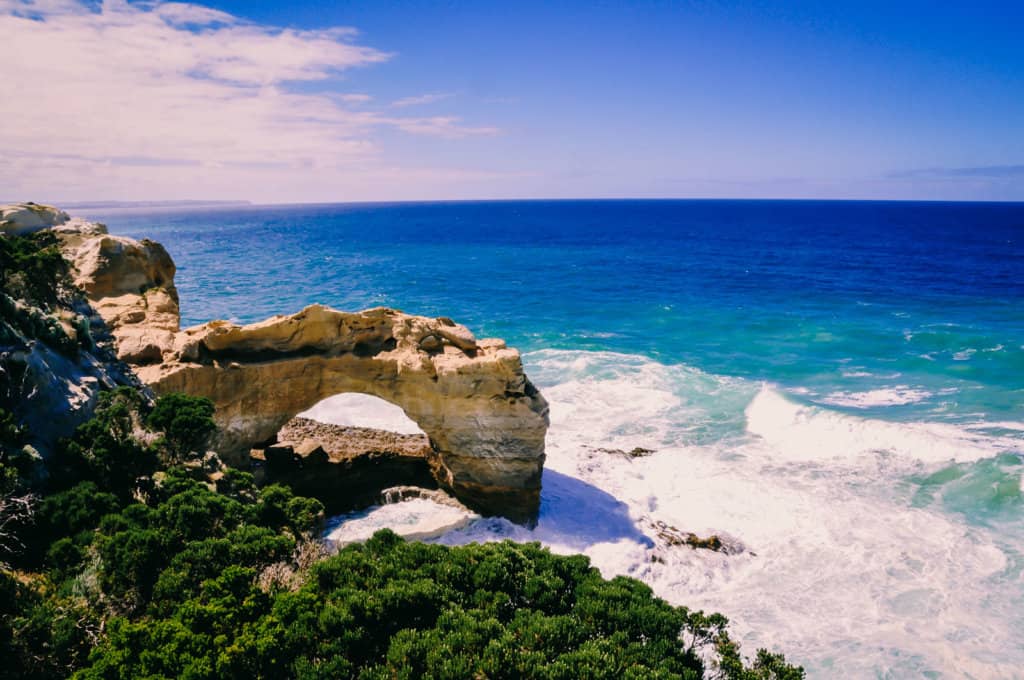
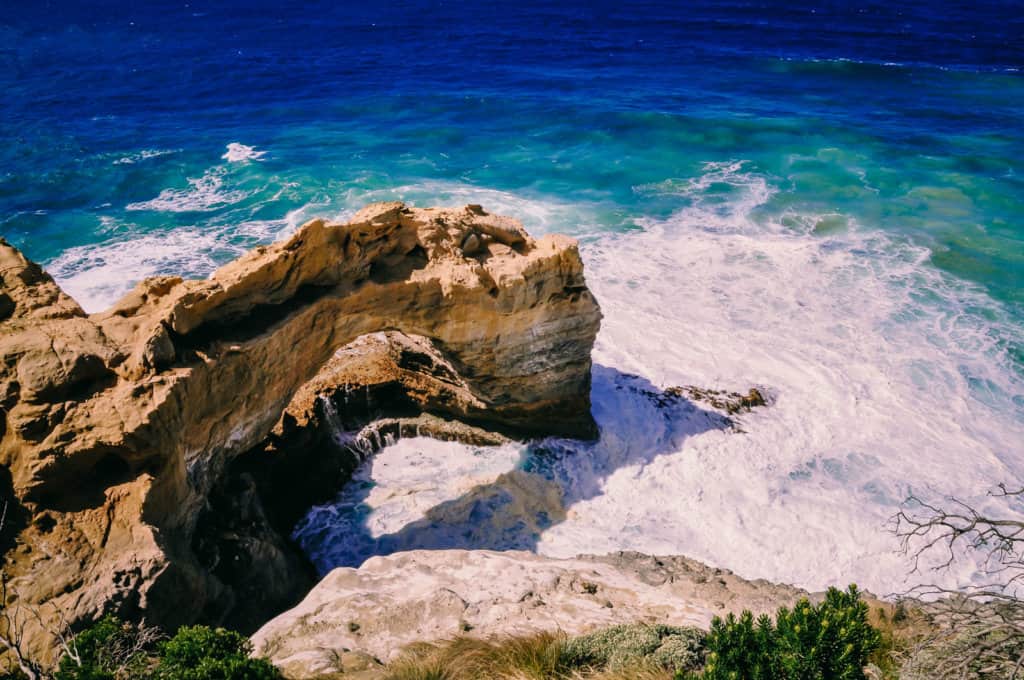
Cape Otway Lightstation to Aire River Campsite
The weather forecast for the next day predicted 40 degrees, which was reason enough for the British ladies to start off towards the Aire River Campsite by 7am to avoid the midday heat. I crawled out of the tent shortly after and was surprised to find them gone yet noticed that the air temperature was indeed much warmer than on the previous mornings.
The sun however remained half-hidden behind a thin cloud layer until late afternoon, which was just as well as we were drenched in sweat on today’s 10km leg (estimated time 3:45 hours) anyhow. When the Great Ocean Walk gave us two options, either walk along the top of the escarpment or on the beach, we chose the latter to watch waves in the colour of Blue Ice Coolers rising three metres high fizzle out to whitecaps up close.
After 200 metres, trudging through hot sand on the beach with my large backpack weighing me down, I was done with watching the sea up close and thought that the views would have been just as lovely from up on the cliff top. Yet I was unwilling to turn back and instead turned my face towards the turf’s fine white mist blowing inland for a seconds cooling relief and carried on. After another 100 metres, muscles in my butt made their presence felt, ones that I never even knew existed. Sand trickled into my steaming boots that seemed to weigh a ton and rubbed against two blisters. The beach was two kilometres long, the sand soft throughout, and in the end, we scrambled up a 120-metre high dune. Altogether, it was a very worthwhile and efficient workout for my butt but next time I’ll walk along the cliff top.
We arrived at the Aire River Campsite in 3:20 hours and were met by a well-frequented campground surrounded by the sea, the Aire River, reed, green meadows and fields, and some Australian bush on which tired koalas slept wedged into forked branches. It was a perfect spot. Almost. I assume most people dislike mosquitos, and most, myself included, also dislike flies or at least consider them a nuisance. I have very little patience with utterly stupid things that annoy me and will run around furiously banging old magazines, kitchen towels, and invoices (my favourite) on furniture, walls, windows, and Tobi, while the flies consider this some macabre game of hide and seek and laugh at me (I think).
Until I exclaim, ‘Got ya!’ and then cringe at the mess of the fly’s intestines splattered cross the glass pane (thankfully the likelihood of our glass panes ‘just having been cleaned’ is shockingly small). I briefly consider buying an electric fly zapper but reject that idea because I hate the smell of electrocuted insects and get down to scrubbing. Luckily there were neither magazines nor glass panes at the campsite as otherwise I would have spent the next two years of my life scrubbing fly carcasses off panes.
I’m talking about sticky flies, which are the epitome of annoyance. Dozens of these small beasts stuck to us (they are called sticky flies for a reason) and made me thrash about wildly in futile attempts to catapult them to the moon as they started yet another landing approach on our ears, eyes, nose, and mouth. It looked like I was participating in a rowing competition and when I smacked Tobi in the face (totally by accident), I furiously exclaimed: ‘Are they stupid or what?’ My boyfriend moved out of my arms’ reach and matter-of-factly replied: ‘Of course they are. How large do you think their brain is?’ He had a point, but I was done playing runway for 150 sticky flies and disappeared into our tent. By evening the beasts had miraculously disappeared.
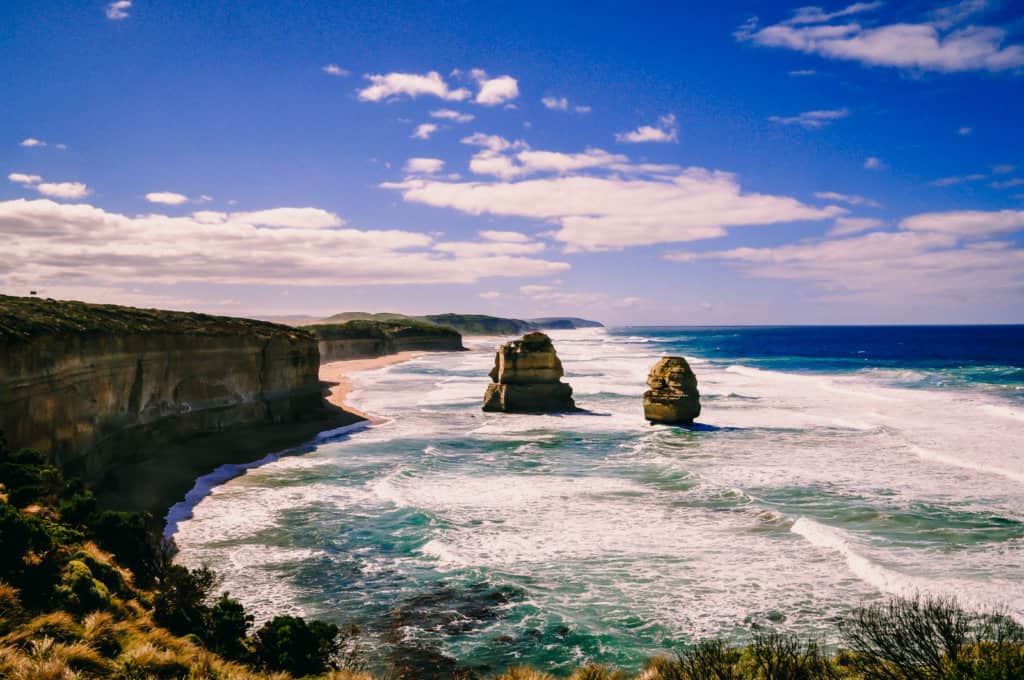
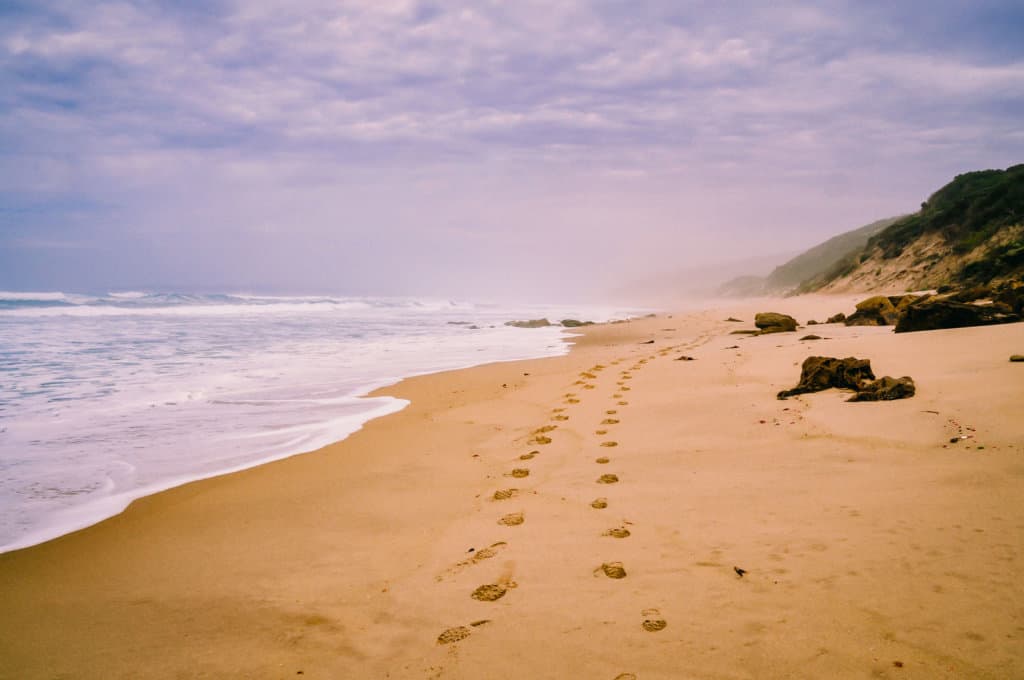
Aire River Campsite to Johanna Beach
With the rain that night, the temperature dropped to barely 20 degrees and it was heavily overcast and drizzled slightly when we set off on our last day on the Great Ocean Walk, the 15-kilometre stretch to Johanna beach. The heavy cloud layer and stormy, churning sea were a very different panorama to the previous days on this last leg, trudging across the beach for three kilometres close to the frothing surf and accompanied by my newfound favourite bird.
The hooded plover – a feathery ball with a black head on short, stick-thin legs – raced across the beach at speeds other birds don’t manage flying. We arrived at the parking lot at Johanna Beach, quite sad that this was our last day hiking on this spectacular trail and waited a half-hour for a GOR (Great Ocean Road) shuttle to pick us up at 3pm for a 50-minute drive back to Apollo Bay (A$50/2 persons).
